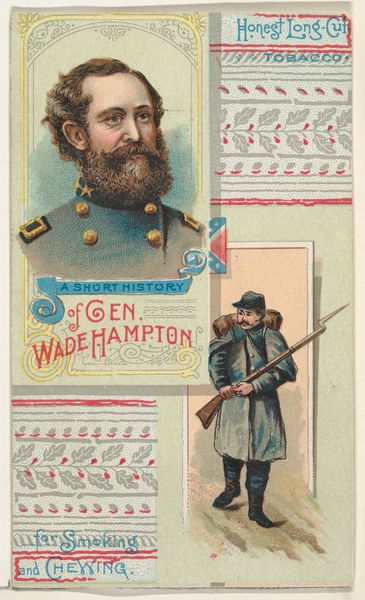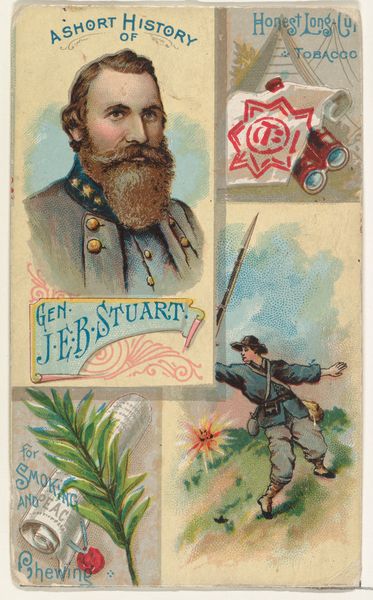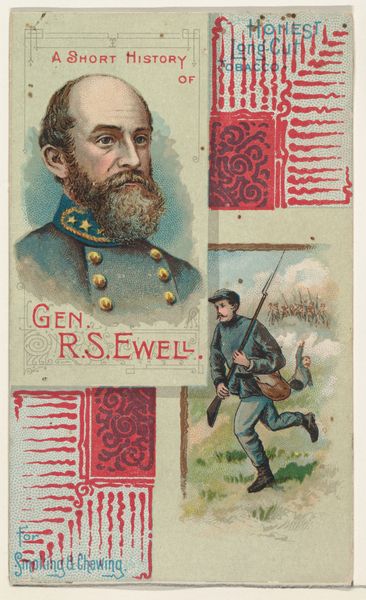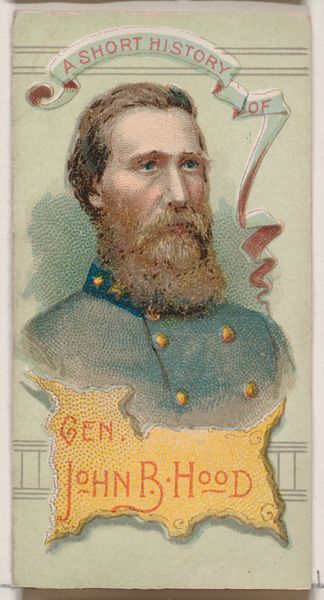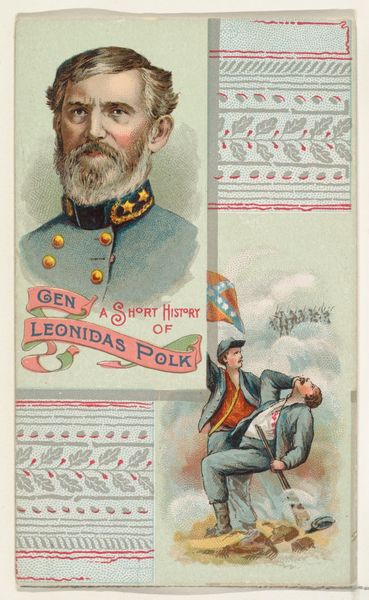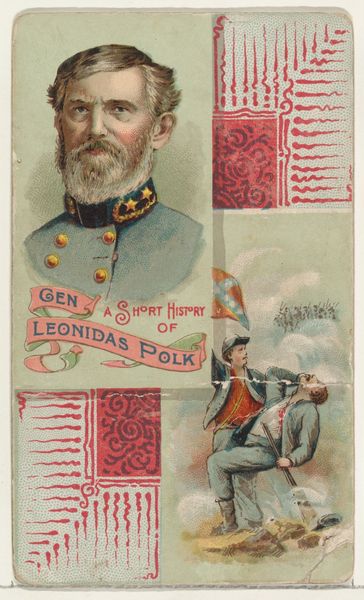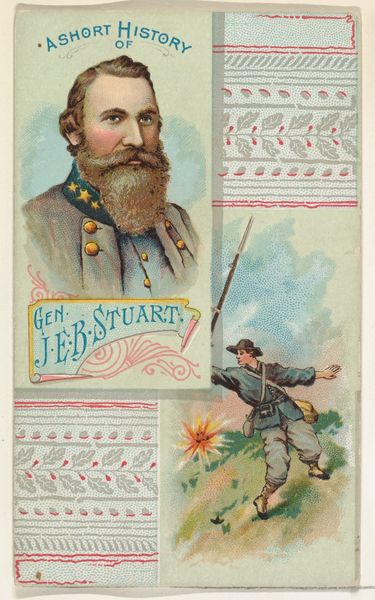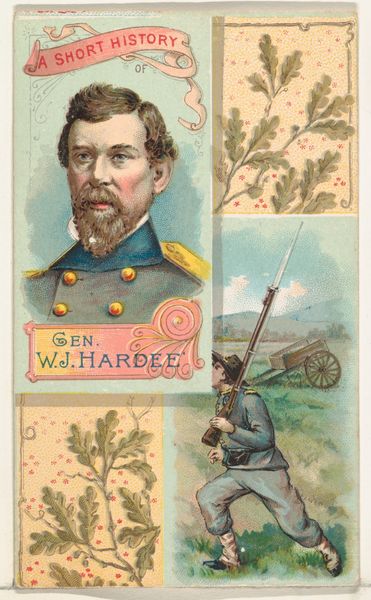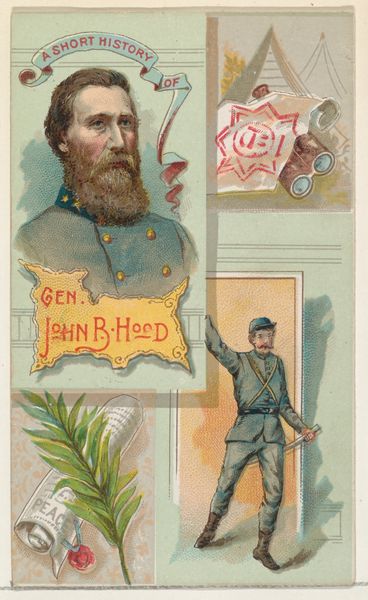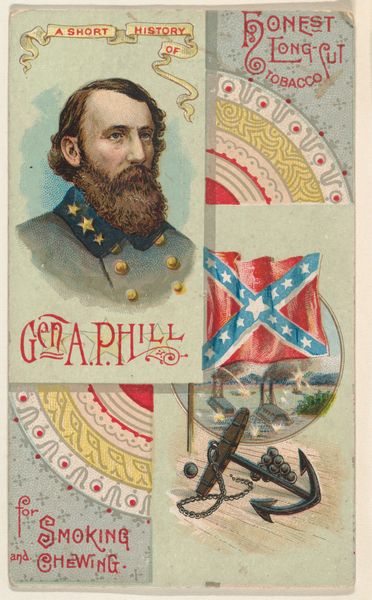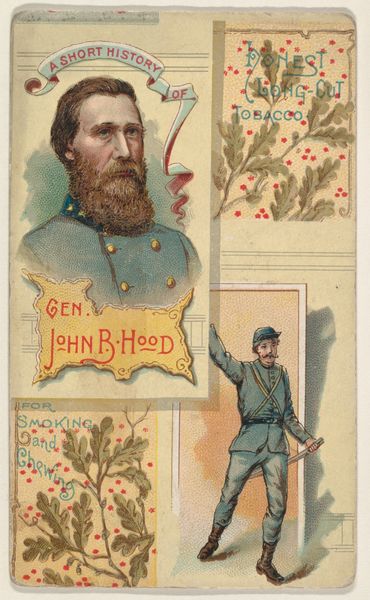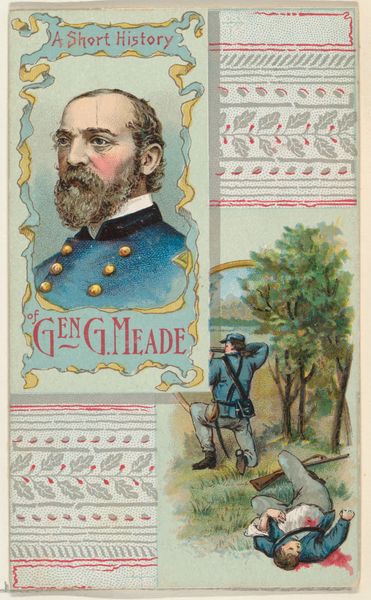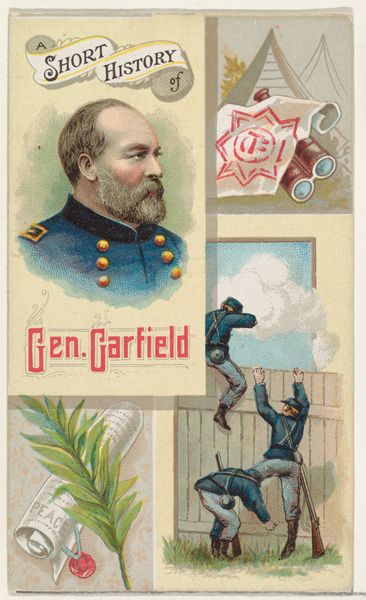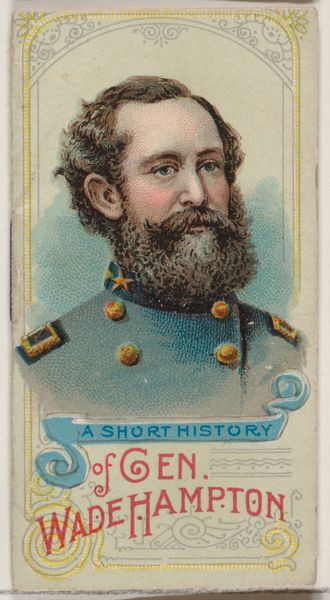
A Short History of General Wade Hampton, from the Histories of Generals series (N114) issued by W. Duke, Sons & Co. to promote Honest Long Cut Smoking and Chewing Tobacco 1888
0:00
0:00
drawing, coloured-pencil, print
#
portrait
#
drawing
#
coloured-pencil
#
water colours
# print
#
impressionism
#
coloured pencil
Dimensions: Sheet: 4 3/16 × 2 1/2 in. (10.7 × 6.4 cm)
Copyright: Public Domain
Editor: So, this piece is "A Short History of General Wade Hampton," a print from 1888 by W. Duke, Sons & Co. It’s advertising tobacco, of all things. The use of color and layering is interesting. What are your thoughts on this object? Curator: I'm drawn to this commercial print as an artifact of late 19th-century American industry and its use of art. Let's consider the material conditions. We see mass-produced color lithography used to promote a tobacco product, embedding imagery of the Civil War—a portrait of Confederate General Wade Hampton and a Confederate soldier—into everyday consumption. What does this confluence of war and commodification tell us? Editor: It’s unsettling to think about such a divisive historical period being used to sell goods. How did the average consumer at the time interpret the imagery? Curator: The means of production allowed for the widespread dissemination of this imagery. Duke, Sons & Co. were explicitly trying to tap into sentiments of the "Lost Cause," marketing to a specific consumer base through these prints. The imagery served as a signifier to their audience about their products. Is art here purely at the service of commerce, or can we detect social value embedded in its production? Editor: I hadn’t thought about it that way, as constructing value. The print, normally insignificant, is actually saying much more about this history through the means of its making and use. Curator: Exactly. Think about the laborers involved: from the artists creating the design, the factory workers running the printing presses, to those who harvested and processed the tobacco. What class positions and roles do they represent? It’s important to not focus on aesthetics, but instead focus on the entire socioeconomic network that makes this all possible. Editor: Looking at it that way, it’s amazing how much history can be extracted from something seemingly trivial. Thank you! Curator: Indeed, examining the labor and materials behind art gives us new eyes to understanding cultural and commercial histories.
Comments
No comments
Be the first to comment and join the conversation on the ultimate creative platform.
